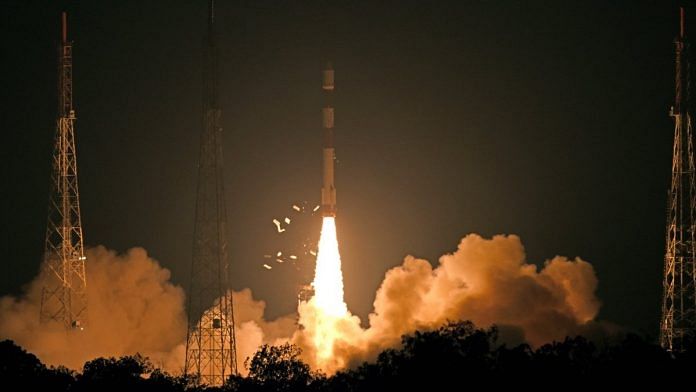Bengaluru: The Indian Space Research Organisation (ISRO) is ready to launch its PSLV-C49 mission Saturday afternoon, with the primary payload of India’s radar-based weather imaging satellite.
The launch is scheduled for 3:02 pm at Sriharikota’s first launchpad, weather conditions permitting. The mission had been scheduled for earlier this year but was postponed due to the ongoing Covid-19 pandemic.
The PSLV rocket will also carry nine customer satellites from three other countries.
PSLV-C49 and EOS-01
The EOS-01 is the primary payload on the PSLV-C49 mission. It is a synthetic aperture radar weather imaging satellite capable of functioning in all kinds of weather. It is a part of India’s RISAT series of imaging satellites.
The satellite was originally called RISAT-2BR2, but has since been renamed EOS-01 in accordance with ISRO’s new naming scheme for satellites. The satellite will aid forestry, agricultural, and disaster management.
The C49 mission is the 51st mission of the PSLV and the second to be flown in the DL configuration, where instead of four, only only two 12 metre-high strap-on boosters with 12 tonne propellant load are used.
In keeping with the pandemic protocol, gathering of media personnel is not allowed for this delayed launch. The launching gallery that usually hosts hundreds of guests has also been closed.
Also read: Multitasking between different digital media linked to memory failure, finds Stanford study
Customer satellites
In addition to the primary satellite, there are also nine customer satellites being launched through the mission.
Lithuania’s technology demonstrator R2 is riding on the rocket. The nano-satellite built by NanoAvionics is being launched to demonstrate the function of the company’s M6P satellite bus. The company focuses on building cost-effective satellite platforms and has previously launched with ISRO in 2019.
Luxembourg is launching four maritime applications satellites in the series called Kleos — KSM-1A/1B/1C/1C. These are a part of a scouting mission to locate missing humans and protect assets. The satellites are built by GomSpace.
There are also four remote sensing Lemur satellites — 1,2,3,4 — from the US. Lemur satellites, built by San Francisco-based Spire Global, operate as a ‘space-as-a-service’, offering a flexible platform for a variety of payloads, including for defence customers.
Also read: ISRO-NASA satellite NISAR expected to be launched by 2022






